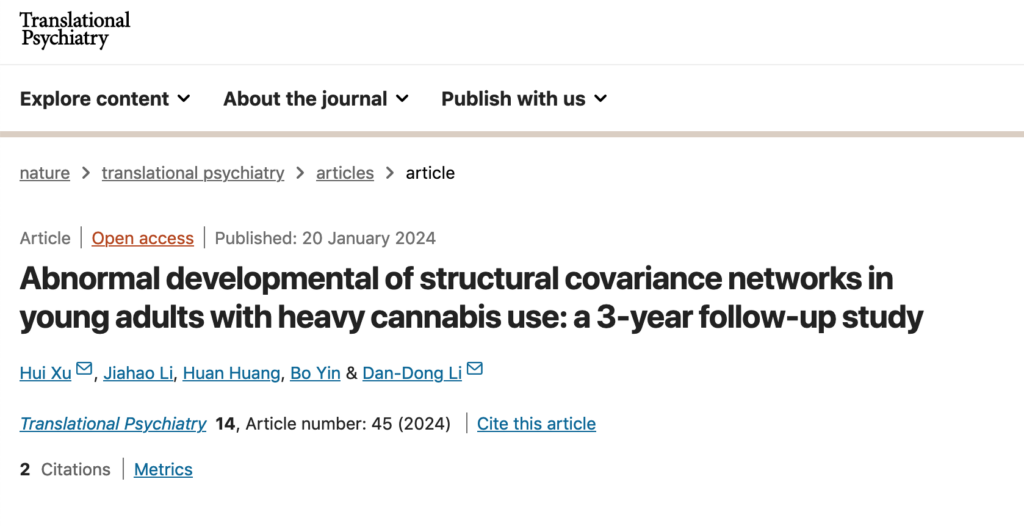
A study published in January 2024 is proving that there are real dangers associated with heavy and frequent cannabis use—like altered brain development in youth.
The study was published in Translational Psychiatry, a peer-reviewed medical journal from Nature Publishing Group. Its five researchers are affiliated with the Wenzhou Medical University and Xi’an Jiaotong University.
The researchers recruited two sets of participants: both young adults aged 18–25. The first group of 20 participants were heavy users of cannabis. The second group of 22 participants had used cannabis fewer than 30 times in their life and hadn’t used it at all in the year before the study began. The researchers defined “heavy use” as using cannabis for more than 10 days a month for at least two years, without seeking or receiving treatment for that use.
Both groups underwent MRI scans, with researchers measuring their baseline brain structure and following up with scans after three years. What they found was that heavy-use users were more likely to have started using cannabis at a younger age. And at baseline, the heavy-use group showed signs of altered brain structures. At follow-up, researchers found abnormalities in various brain regions of the heavy-use group, but not in the control group. One of the abnormalities was found in the default mode network (DMN), a set of brain regions that are more active when someone is at rest or performing passive tasks.
Cannabis abuse among kids aged 6–18 has increased by around 245% since 2000. It’s a startling statistic, especially considering the effects on the developing teenage brain. This study highlights the need for stronger marijuana regulations and greater awareness around the truth of this dangerous drug.
To read about the study in more detail, visit this page.

